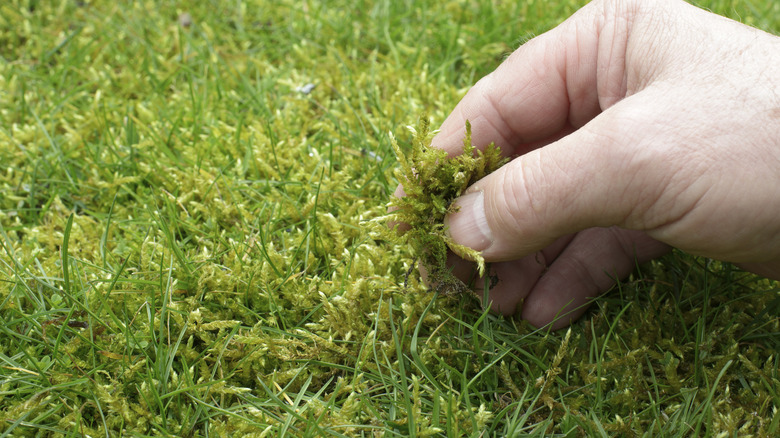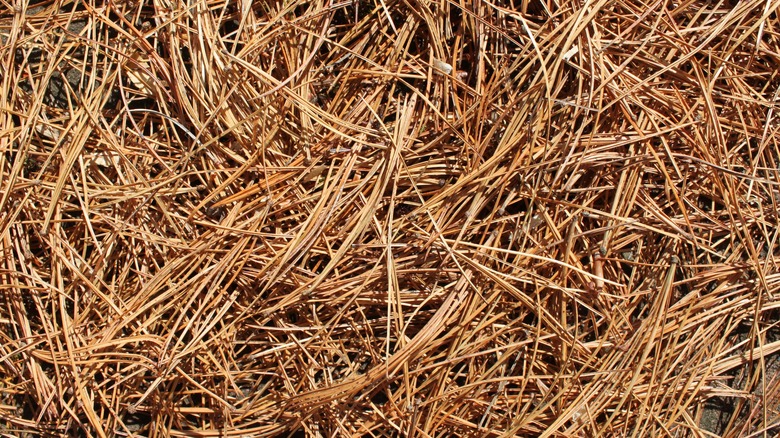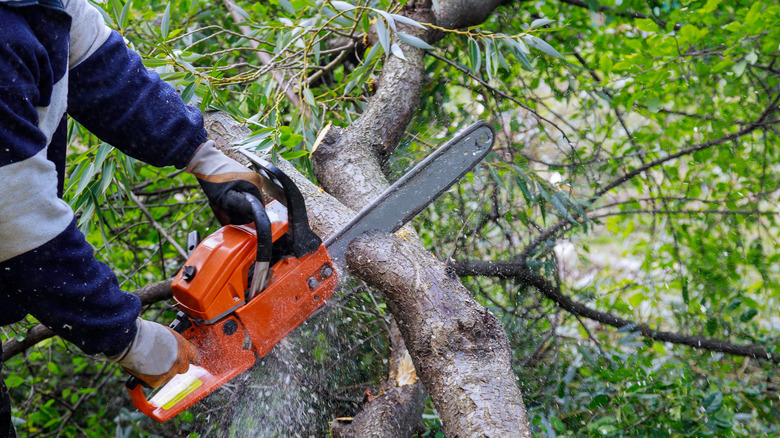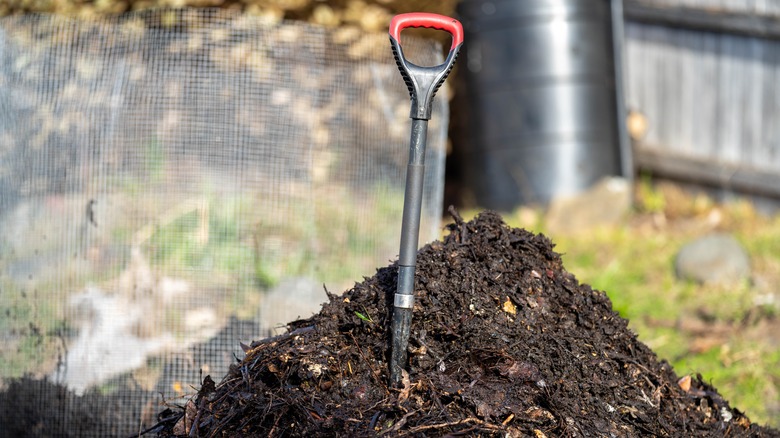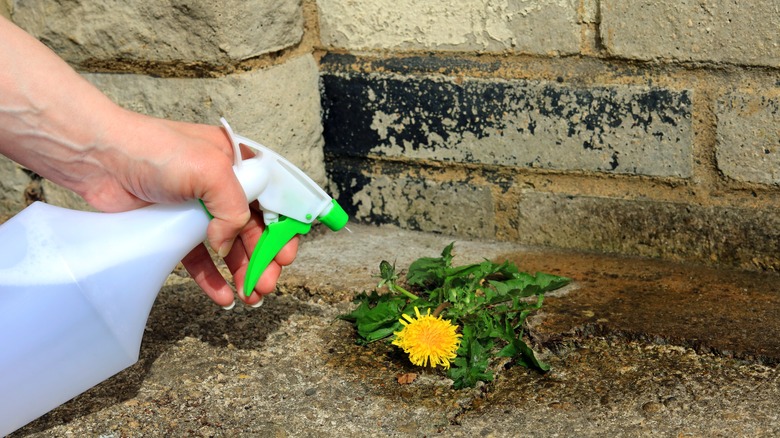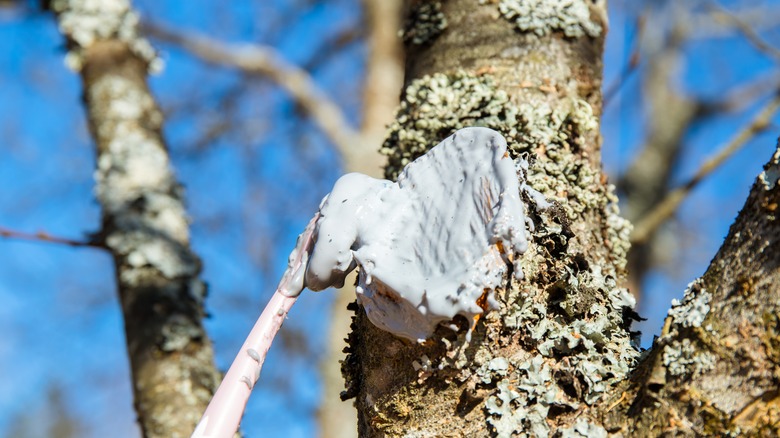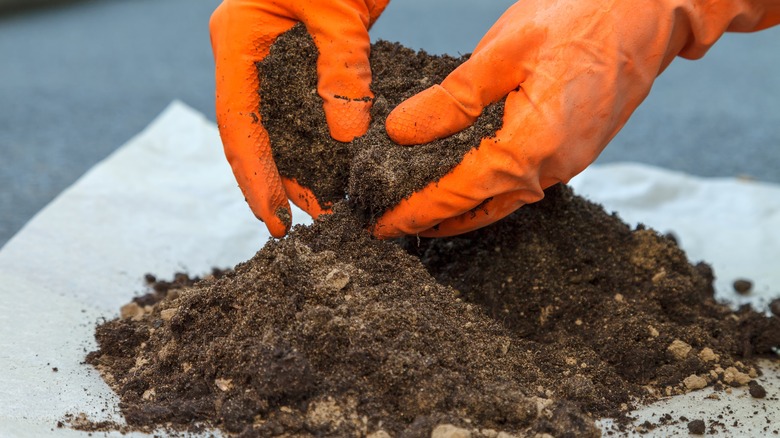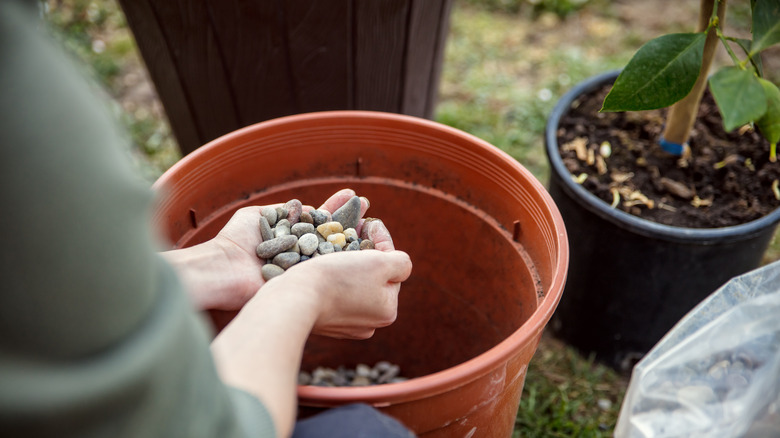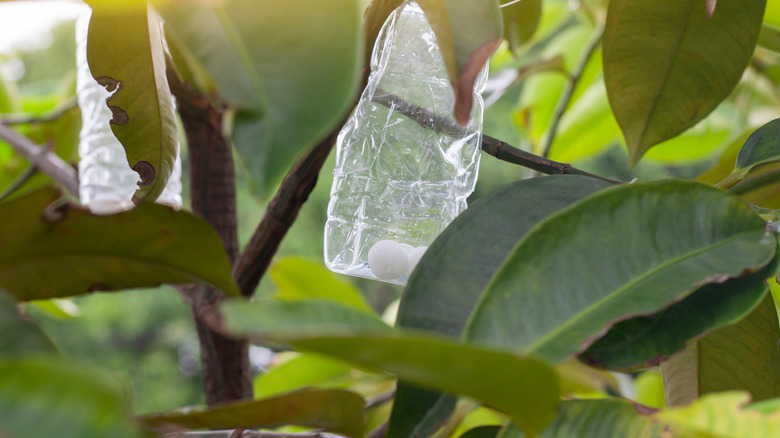Overrated Gardening Tips That Aren't Worth Your Time
Do you have moss on your lawn? How about lime to get rid of it? The internet is awash with gardening tips like these, and social media platforms have made it easier for everyone to share their horticultural expertise. Unfortunately, not all of that information is true. Science-backed facts and expert advice are often buried under a ton of pseudo-science, anecdotal evidence, and outright fabrications. Some viral tips are overrated, while following others often does more harm than good to your lawn and garden.
No, you shouldn't use lime to eliminate moss on the lawn. Nor should you use Alka Seltzer against garden moles, either. But, it's not always easy to tell the difference between what's valid and what's not. This article examines many of those gardening claims and lays them to rest. It also explains why you shouldn't follow them and how the serious damage they cause often outweighs their alleged benefits. As you go through these overrated recommendations, you might also inspect your own gardening strategies. Are they rooted in science, or are they based on practices of dubious origin and credibility? Let's take a deeper dive.
Use lime to eliminate moss in the lawn
Lime has been touted as a moss killer on home improvement websites and online forums for years. Moss is never a good sign on the lawn. And since it favors acidic soil, you're inclined to believe that lime, which is alkaline, will kill it. But that couldn't be further from the truth. Lime has little effect on eradicating it. While it might slightly change the pH of the soil, it doesn't actually kill the spongy vegetation. The best it can do is slow down its growth. But if you want to eradicate it, you have to change the conditions that made it grow in that spot in the first place.
Moss is a plant that doesn't flower or have roots. It grows in the shade and thrives in nutrient-deficient soil that is acidic and constantly moist. So to kill it, you need to reverse those conditions. To deal with poor light, you can either cut down the trees and shrubs that cast the shade or prune and trim them down. To reduce moisture, adjust your watering practices according to the type of grass and the season of the year. If that patch has poor drainage, try aerating the soil or adding sand topdressing. To find out if the soil is acidic and what nutrients are needed to revive the grass that was once there, get a soil test done and fertilize accordingly. Changing these conditions will help revive your turf, which will slowly start to choke out the moss on its own. Once the spongy vegetation weakens, you can simply remove it with a rake or a flail dethatcher.
Pine needles increase soil acidity
The idea behind this myth is that pine needles are naturally acidic because soil tests performed near pine trees often come back with high acidity readings. As a result, many people who believe this tip will stop using pine needles as mulch, depriving the soil and plants of their many benefits, like locking in moisture and keeping weeds at bay. But the pine tree has nothing to do with making the soil acidic. It's actually the other way around. The pine grew in the soil because it was already acidic.
As for mulching with aged pine needles, it will not have an impact on the pH levels of the soil. Fresh pine needles are highly acidic, with a pH between 3.8 and 3.2. But leaving them under the tree for a while allows bacteria to break down the acidic compounds in the needles, rendering them neutral. In other words, the longer they stay in the soil, the less acidic they become. Even fresh needle mulch is safe for plants since it only has a short-term effect on the soil's pH.
Cut the tree's top to manage its height
When you have a tree that's grown too large and is blocking your view, a neighbor or landscaper might suggest topping it. They would explain that knocking a few feet off the top of the tree will make it shorter and give it the compact size you desire. For a while, that would work. But now you have an ugly tree with most of the dense canopy gone, limiting the energy it produces from photosynthesis. As the shocked tree tries to cope with the loss, it might launch into a frenzy of fast growth. However, the new branches are often weak and can't support the weight of the canopy, which can lead to eventual breakage, creating a dangerous scenario. If the tree doesn't launch into new growth, the cuts can instead become infected by pests and disease, weakening it severely. In many cases, the stressed tree will eventually die.
Instead of putting your tree through so much to achieve so little, you can try thinning the crown instead. This involves removing sick or dead branches with a selective trimming of the canopy to reduce its size. When reducing the crown, don't cut more than 20% of the tree's canopy at a time. If that doesn't solve the problem, consider cutting down the tree and planting a new variety that reaches shorter heights.
Too much compost never hurts the soil
Gardeners use compost to treat a lot of soil and plant problems. It amends heavy soil, feeds the roots, and improves water retention. There's, however, a belief that the nutrient-packed organic material is so good that you can't possibly go wrong with it. If little compost helps, then more of it will definitely double the benefits. But that's a fallacy. Too much of the organic plant food will disrupt the dirt's nutrient balance. This can affect the plant's growth and limit its uptake of certain important nutrients. For example, a high concentration of phosphorus reduces foliage development, and too much ammonium in the soil can interfere with the roots' ability to absorb calcium and potassium.
Organic matter abuse can happen whether you dump too much of the material in the soil at once or increase the build-up over the years. Healthy soil should have between 3% and 6% of compost in it. To avoid going over that recommended limit, test the soil a few times a year and use the appropriate compost to address nutrient deficiency. Stop adding it once the dirt is appropriately amended. Composted animal manure should be used sparingly since it's rich in calcium, which can make the soil more alkaline.
Vinegar is a weed killer
Some gardening myths have a grain of truth in them that gets amplified and blown out of proportion. The legend of vinegar the weed killer has some truth to it, but isn't entirely accurate. It states that the acetic acid in the liquid damages the surface of the weed, drying out its leaves and effectively killing it. That's all true, but there's a catch. Vinegar needs between 20% and 30% acetic acid concentration to cause this level of damage. The vinegar in the kitchen has between 4% to 6% acetic acid, so it's not a potent herbicide. Also, you should think twice before using vinegar to kill weeds. Acetic acid is non-selective and will kill any plant it comes into contact with. That includes the turfgrass on the lawn and the flowers in your flowerbed.
If you're choosing vinegar to kill weeds because you don't like herbicides, there are safer alternatives to both options. You can manually pull out the weeds and dispose of them, taking special care to remove all the roots. Mulching is an effective way to smother weeds, and you could use boiling water to kill the invasive plants, though that can also harm the surrounding plant life if you're not careful.
Protect pruned plants with varnish or paint
After you're done pruning your tree or shrub and you see so many cuts on the branches, you might be tempted to cover them with a wound dressing for protection. For pruned plants, wound dressing options range from paint, varnish, and tar, to expanding foam, and silicone caulk. But this is a gardening myth. The logic behind this debunked and pointless recommendation is that these wound sealers protect the plant against pests and infections. But there's no need for that since the tree seals its wounds naturally. Covering the wounds with these chemical sealers isn't healthy for the plant, either. They often trap moisture, which leads to limb rot. Moreover, these sealers prevent callus from developing over the wounds, which delays the healing process.
Pruning is important to promote healthy growth, improve sun exposure and ventilation, and keep the tree in good shape. Clean pruning cuts seal themselves and heal on their own. Instead of applying chemicals to the cuts that would harm them, you should prune the tree properly and at the right time. That means cutting just above the bud on small branches and 18 inches from the branch collar on large branches. Using sharp and sanitized tools will prevent infections and limit the damage to the branches. It's also best to do so when the tree isn't actively growing, which means late winter and early spring is the best time to prune.
Use sand to amend clay soil
Clay has fine particles that easily become compact and waterlogged. Sand, on the other hand, has large and loose particles that absorb moisture quickly. Mixing the two might seem like a good idea to amend heavy soil, but it's not. Instead, it hardens the soil and makes it more compact. "Like diamonds, clay soils are highly structured at the atomic level," Linda Brewer, senior faculty research assistant, told Oregon State University's College of Agricultural Sciences. "No amount of sand added to a clay soil will change its texture. The large sand particles provide a surface onto which the tiny clay particles adhere. The result can be more difficult to manage than the original clay."One reason this overrated tip doesn't work is that you're not adding enough sand to the heavy soil. You'll need to have equal amounts of sand and clay to bring about the desired change you want.
Using organic matter to improve heavy clay soil in your garden works better than sand. Organic matter can be compost, wood mulch, bark chips, shredded leaves, grass clippings, or rotted manure. It contains beneficial microbes and earthworms that break down the materials and change the texture of the soil. Another option is to use gypsum or ammonium lauryl sulfate to amend the soil. These compounds bind with the clay particles, which helps loosen the soil and improve drainage.
Gravel in pots improves drainage
Drainage is important for the survival and growth of potted plants, so an old gardening tip recommends lining the bottom of the pot with gravel or small rocks. It claims to improve drainage since water usually runs through rocks and pebbles quickly rather than pooling in puddles. Unfortunately, the opposite is true. Any time you fill the bottom of the pot with a material that's different from the growing medium, you create something called a perched water table. Water stops when the soil changes into some other medium, making it puddle to the side of the container rather than flowing straight through and out the drainage hole. This makes the water sit in the pot for some time, oversaturating the roots and eventually leading to root rot. And this isn't just for gravel and pebbles — this also goes for soda cans, recycled plastic, and broken pottery as well.
If you want to increase drainage in a safe way, mixing the potting mix with perlite or vermiculite is a good alternative. If you use pebbles to keep the dirt from falling out of the drainage hole, a paper towel, coffee filter, or a page from an old newspaper will do a better job of keeping the mess in while allowing the water to flow out freely. And if you use things like plastic bottles or other fillers to decrease the amount of heavy dirt in large planters, cut a piece of plywood and drill a few holes in it instead. Then squeeze it into the container at the desired height to create a false bottom.
Mothballs control lawn and garden pests
If mothballs kill moths, why not use them against garden pests such as snakes, mice, squirrels, and groundhogs? That's the reasoning behind this gardening tip. However, one good reason you shouldn't do that is that it will get you in trouble with the law. The Environmental Protection Agency prohibits the use of mothballs for any purposes other than what's stated on the label. They contain naphthalene and paradichlorobenzene, both of which are toxic for humans and pets, either through ingestion or inhaling the fumes. Using mothballs in the garden has little effect on pests and could contaminate the soil, water, and air. Moreover, plants could absorb the chemicals, which would be particularly dangerous if that happens in your vegetable garden.
You'll get better results repelling these pests with more efficient methods than mothballs. Trapping or installing a fence is an effective deterrent against groundhogs and rabbits. Keeping the lawn or garden clutter-free and unshaded will dissuade snakes from taking shelter there. And if you have a mole or gopher problem, digging a ditch and lining it with wire mesh will keep them away.


